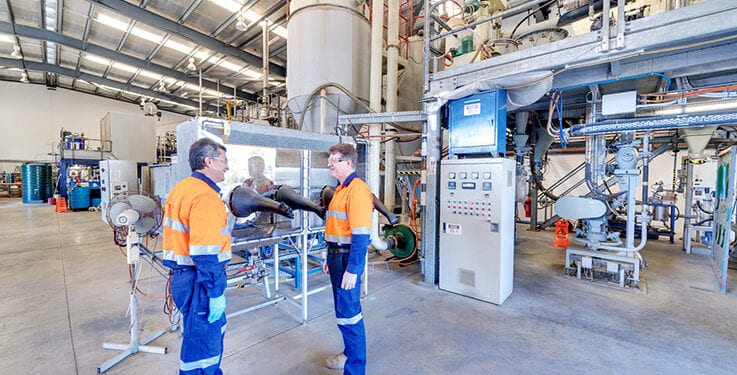Records Superior Performance Of VSPC’s Lithium Ferro Phosphate
Lithium Australia’s (ASX:LIT) subsidiary VSPC Ltd’s recently completed Pre-Feasibility Study (PFS) has demonstrated its capacity to produce some of the most advanced LFP cathode powders available.
Lithium Australia Managing Director, Adrian Griffin, said the study also identified higher energy density variants such as lithium manganese ferro phosphate (LMFP).
“VSPC has completed a PFS that clearly demonstrates the value of establishing an alternative cathode powder supply chain using VSPC’s proprietary technology,” Mr Griffin said.
“These major milestones have been achieved in an environment in which the largest electric vehicle (EV) producers are moving to incorporate LFP lithium-ion (Li-ion) batteries into entry-level vehicles, due to their superior safety, lower cost, longer life and reduced exposure to conflict metals.
“These LFP attributes are also expanding its utilisation in stationary energy-storage applications. Indeed, major battery producers worldwide are racing to expand their LFP production to meet demand as LFP becomes the fastest growing sector of the battery industry.
“At present there is little LFP production outside of China, with original equipment manufacturers striving to secure alternative supply chains. Lithium Australia and VSPC aim to provide that supply chain security.”
VSPC is a developer of process technology for the manufacture of nanostructured materials used in applications such as catalysts and Li-ion batteries. Over a 15-year period, VSPC has developed novel process technologies for the manufacture of LFP cathode powders, one of several Li-ion battery materials for which strong demand is forecast. VSPC’s LFP cathode materials are advanced products with performance characteristics equivalent to the leading products in the market produced by more expensive sol-gel and hydrothermal processes.
This PFS is for a 10,000 tpa LFP production facility, located in the Indo-Pacific region, to serve the growing demand for LFP cathode material globally. The project assumes production commencing October 2023, reaching full capacity in July 2025. Three country options have been evaluated; namely, India, Vietnam and Australia.
The PFS concluded that projects in India and Vietnam would have similar and very attractive financial outcomes, while a project in Australia, although still financially strong, would be less attractive, due to higher capital costs and marginally higher operating costs.
The Indian project, which has an NPV of USD 253 million (8% discount rate, 2036 – 13 years’ production) and an IRR of 33%, is the most favourable due to competitive operating costs and a corporate tax rate of 17.2%. Locating a project in India has strategic appeal in terms of it serving both the international and emerging domestic market.
Global production of LFP in 2020 was approximately 120,000 tpa and constituted approximately 20% of total cathode material production. The Industrial Technology Research Institute (ITRI) forecasts strong adoption of LFP across the major application segments, and that overall demand for LFP will be 150 gigawatt hours (‘GWh’) or 305,000 tonnes (‘t’) LFP in 2025, and 331 GWh or 675,000 t LFP in 2030. The growth rate is strongest for the EV segment at 25% compound annual growth rate (‘CAGR’). Roskill further proposed a more aggressive scenario for adoption of LFP in the EV market that would see demand grow more than four-fold to 500,000 tpa by 2025 and 1.3 million tpa by 2030 (Roskill, 2020).
Global LFP consumption in recent years has been predominantly within China, while the non-China market for LFP is estimated to have been less than 10,000 tpa and confined to a limited number of cell makers in Japan, Taiwan, France and South Korea. A resurgence in demand outside China is expected as cell making becomes established in the major global markets, including the Indo-Pacific region, Europe and North America. VSPC estimates that the non-China market will be at least 65,000 tpa by 2030, assuming only 10% of global LFP cell making occurs outside China.
India is an important emerging market, with strong government incentives for the establishment of 50 GWh of cell-making capacity in the next 5 years. If 30% of that capacity is LFP, then the domestic market in India alone will be 30,000 tpa in 2025.
Expansion of LFP cathode material capacity is required in China and internationally as demand increases for LFP batteries for EV applications and to replace lead-acid batteries in automobiles, back- up power supplies and stand-alone power for remote site applications.
Given the strong forecast growth in demand for LFP cathode material, the VSPC business plan is to service the expected growing market for LFP outside China. This study is for development of a 10,000 tpa LFP project in the Indo-Pacific region to serve markets in Asia, Europe and North America.












